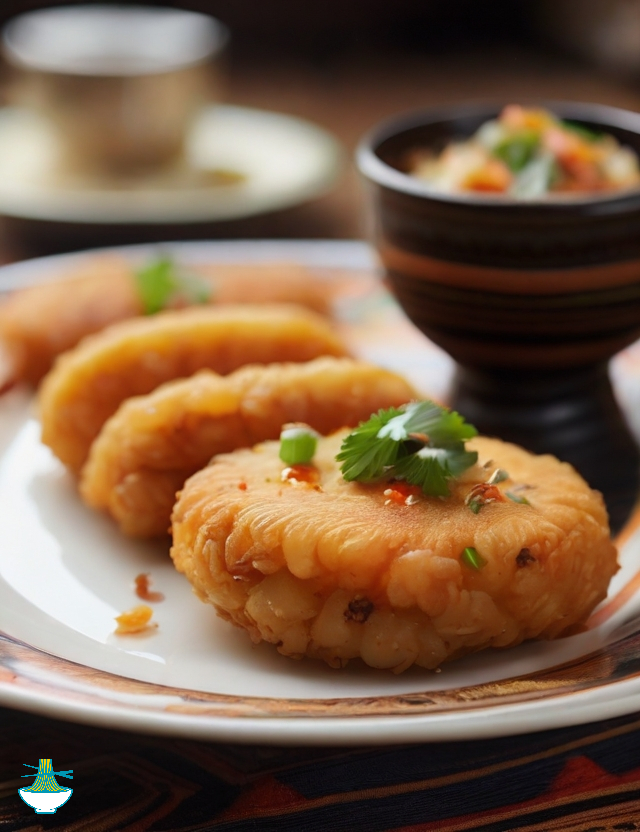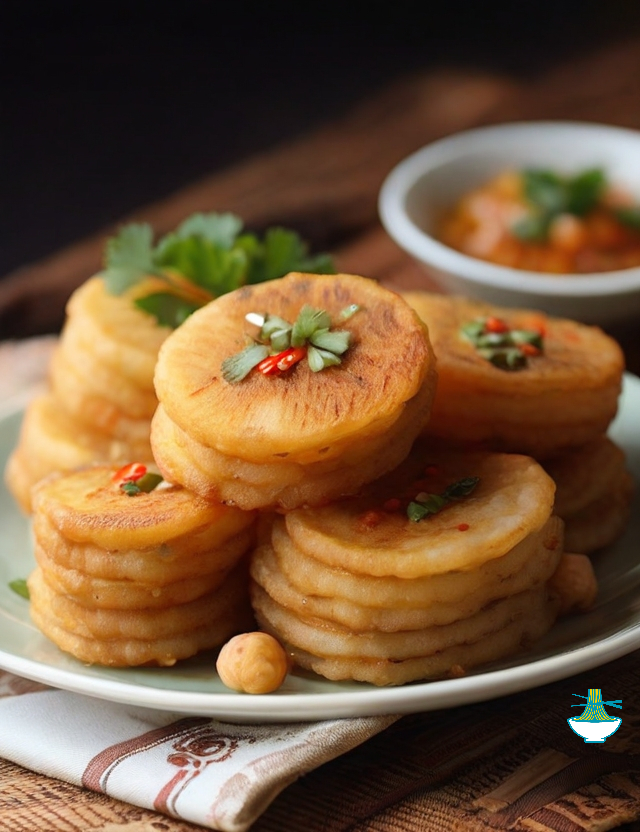Embark on a culinary journey to Burkina Faso, where the vibrant culture and diverse traditions come alive through the art of cooking. One dish that encapsulates the essence of Burkinabé cuisine is Maasa, also known as Masa—a delectable treat that has been passed down through generations. Bursting with flavor and cultural significance, Maasa is a beloved dish enjoyed during festive occasions, celebrations, and everyday gatherings. In this culinary exploration, we will uncover the secrets of crafting this mouthwatering delicacy, as we delve into the ingredients, techniques, and the heartwarming traditions that make Maasa an integral part of Burkina Faso's culinary tapestry. Get ready to indulge your senses and bring the taste of Burkina Faso to your own kitchen with our authentic Maasa recipe.
Ingredients:
- 2 cups rice flour
- 1 cup millet flour
- 1/2 cup groundnut (peanut) powder
- 1 teaspoon yeast
- 1 teaspoon sugar
- 1/2 teaspoon salt
- 2 cups warm water
- Oil for frying

Instructions:
Prepare the Batter: a. In a large mixing bowl, combine rice flour and millet flour. b. In a separate bowl, dissolve yeast and sugar in warm water. Allow it to sit for 5 minutes until it becomes frothy. c. Add the yeast mixture to the flour mixture and mix well to form a smooth batter. d. Stir in the groundnut powder and salt, ensuring all ingredients are well incorporated. e. Cover the bowl with a cloth and let the batter rest in a warm place for 1-2 hours, allowing it to ferment and rise.
Heat the Oil: a. In a deep frying pan or pot, heat enough oil for deep-frying over medium heat. b. Ensure the oil is hot but not smoking.
Fry the Maasa: a. Give the batter a good stir to deflate any air bubbles. b. Using a ladle or spoon, drop small portions of the batter into the hot oil. Aim for round shapes, resembling small pancakes. c. Fry until the Maasa turns golden brown on both sides, flipping them as needed. This should take approximately 2-3 minutes per side. d. Use a slotted spoon to remove the fried Maasa from the oil and place them on paper towels to absorb excess oil.
Serve and Enjoy: a. Allow the Maasa to cool for a few minutes before serving. b. Serve the Fried Rice Cakes with your favorite dipping sauce, yogurt, or enjoy them on their own as a delightful snack.
Note: Maasa can be enjoyed warm or at room temperature. The addition of groundnut powder not only imparts a unique flavor but also adds a delightful crunch to these fried rice cakes, making them a perfect treat for any occasion in Burkina Faso.
Nutritional Values
Providing precise nutritional values can be challenging as they depend on specific brands, variations in ingredient sizes, and preparation methods. However, I can offer approximate nutritional information for some common variations of these ingredients:
Rice Flour (2 cups):
- Calories: 760
- Carbohydrates: 168g
- Protein: 12g
- Fat: 0g
- Fiber: 4g
Benefits: Rich in carbohydrates for energy, a good source of essential nutrients, and gluten-free, suitable for those with gluten sensitivity.
Millet Flour (1 cup):
- Calories: 460
- Carbohydrates: 96g
- Protein: 16g
- Fat: 3g
- Fiber: 7g
Benefits: Packed with fiber for digestive health, high in protein, contains essential minerals like iron and magnesium.
Groundnut (Peanut) Powder (1/2 cup):
- Calories: 400
- Carbohydrates: 10g
- Protein: 20g
- Fat: 34g
- Fiber: 4g
Benefits: Excellent source of protein, healthy fats, and essential vitamins and minerals such as vitamin E, magnesium, and phosphorus.
Yeast (1 teaspoon):
- Calories: 8
- Carbohydrates: 1g
- Protein: 1g
- Fat: 0g
- Fiber: 0g
Benefits: Essential for leavening, aiding in the fermentation process, and contributing to the rise and texture of the rice cakes.
Sugar (1 teaspoon):
- Calories: 16
- Carbohydrates: 4g
- Protein: 0g
- Fat: 0g
- Fiber: 0g
Benefits: Adds sweetness to the dish, enhancing flavor; however, it's important to consume sugar in moderation.
Salt (1/2 teaspoon):
- Calories: 0
- Carbohydrates: 0g
- Protein: 0g
- Fat: 0g
- Fiber: 0g
Benefits: Enhances flavor, regulates osmotic pressure, and balances the taste of the dish; however, moderation is key to maintaining a healthy sodium intake.
Warm Water (2 cups):
- Calories: 0
- Carbohydrates: 0g
- Protein: 0g
- Fat: 0g
- Fiber: 0g
Benefits: Used to activate the yeast and create a suitable environment for fermentation; while it doesn't contribute significant nutrients, it is essential for the recipe.
Oil for Frying:
- The nutritional content will depend on the type of oil used. As an example, using 1 cup of vegetable oil:
- Calories: 1920
- Carbohydrates: 0g
- Protein: 0g
- Fat: 224g
- Fiber: 0g
Benefits: Facilitates cooking through deep-frying, adding a crispy texture to the Maasa; choose healthier oils like vegetable oil for a balance of monounsaturated and polyunsaturated fats.
Keep in mind that these values are approximate and may vary based on the specific brands and types of ingredients you use. Additionally, the nutritional values for warm water are negligible as it contributes minimal calories or nutrients to the overall recipe.


Comments